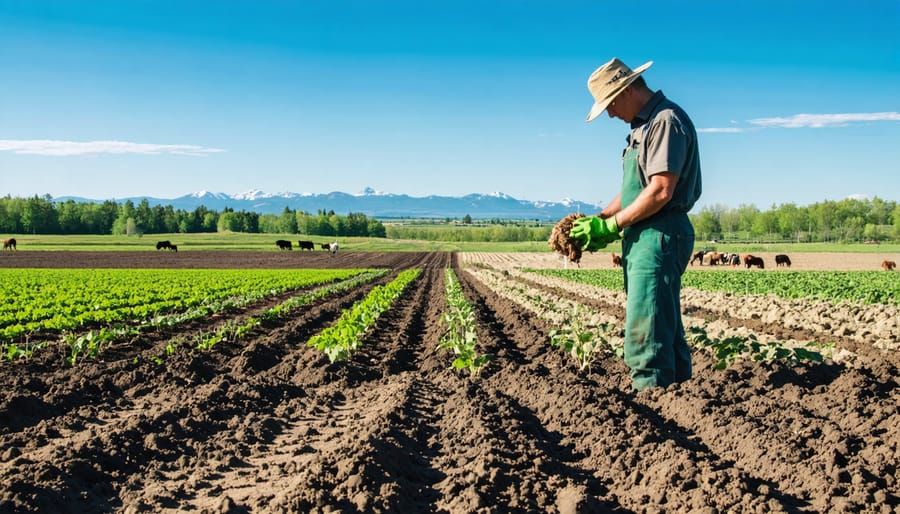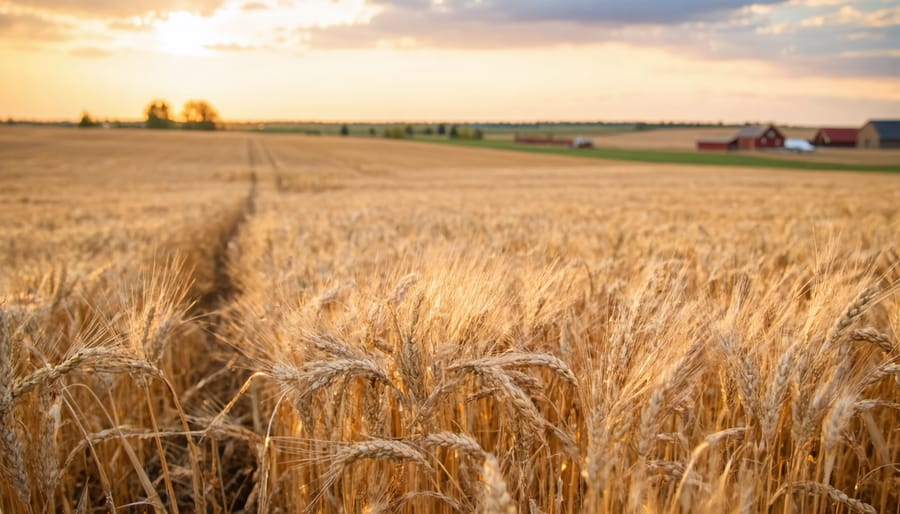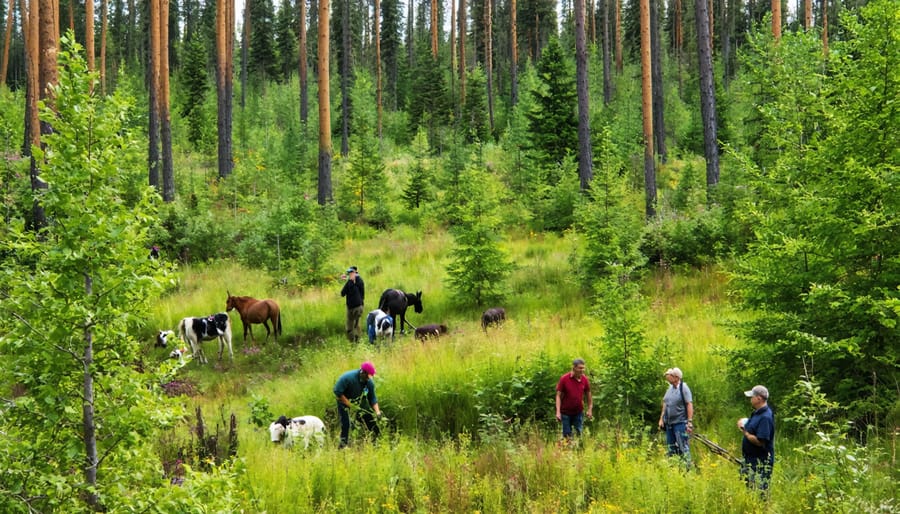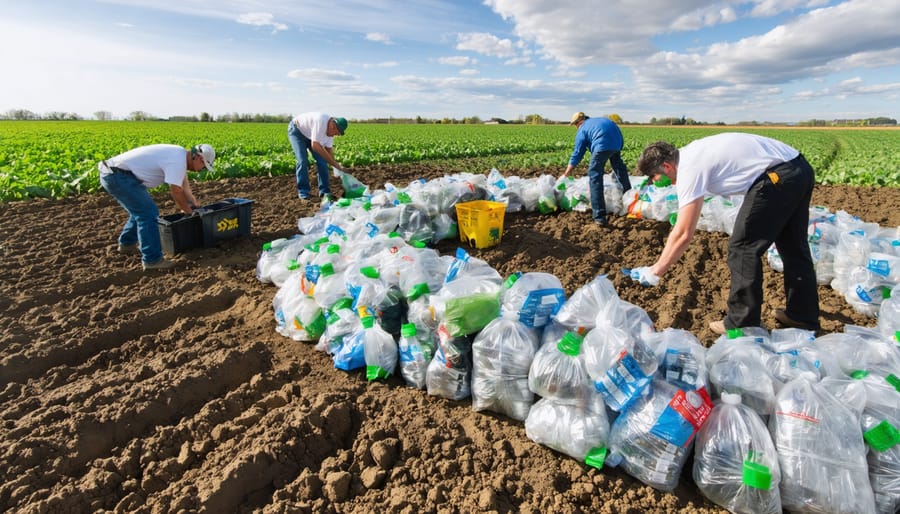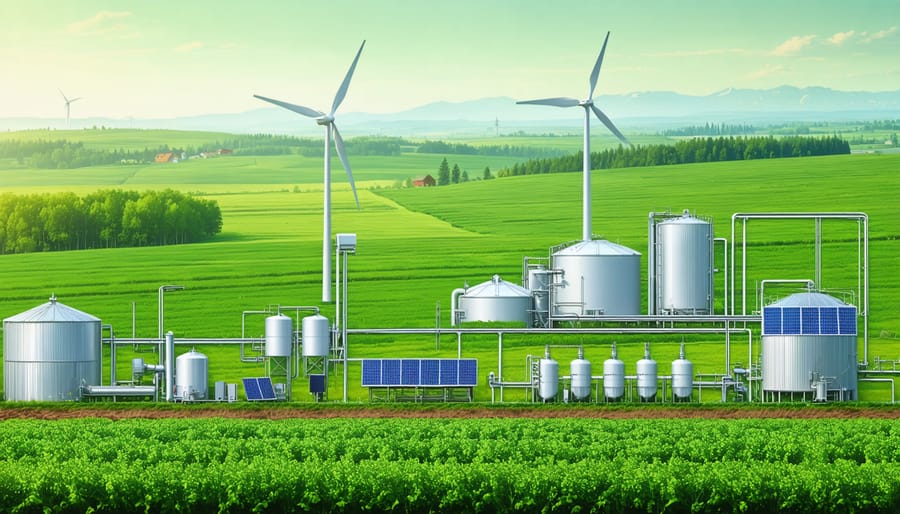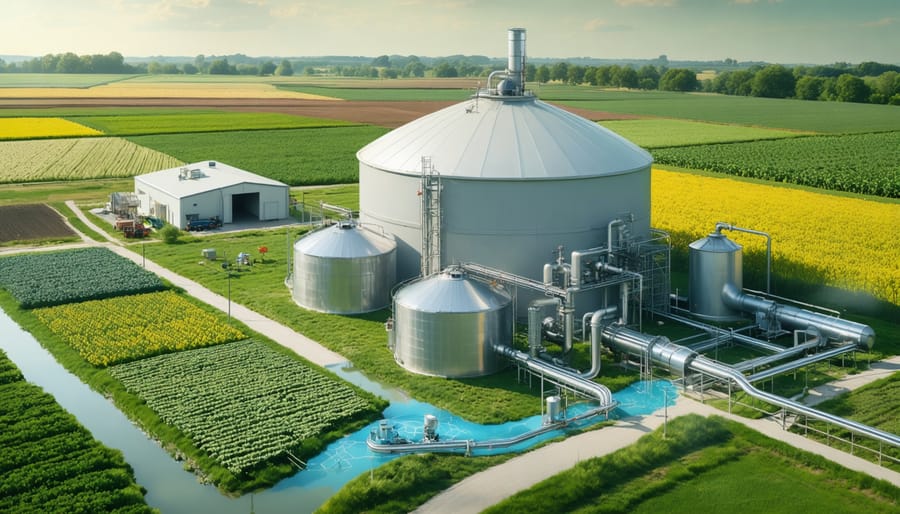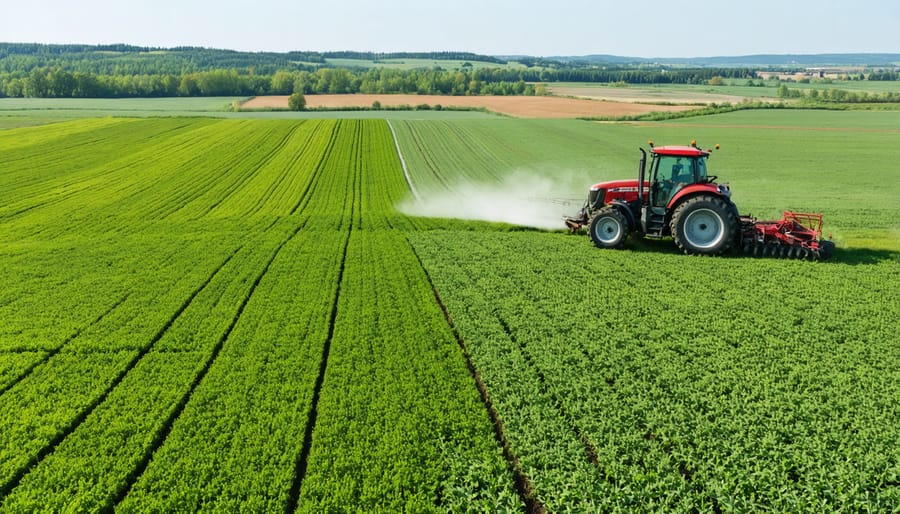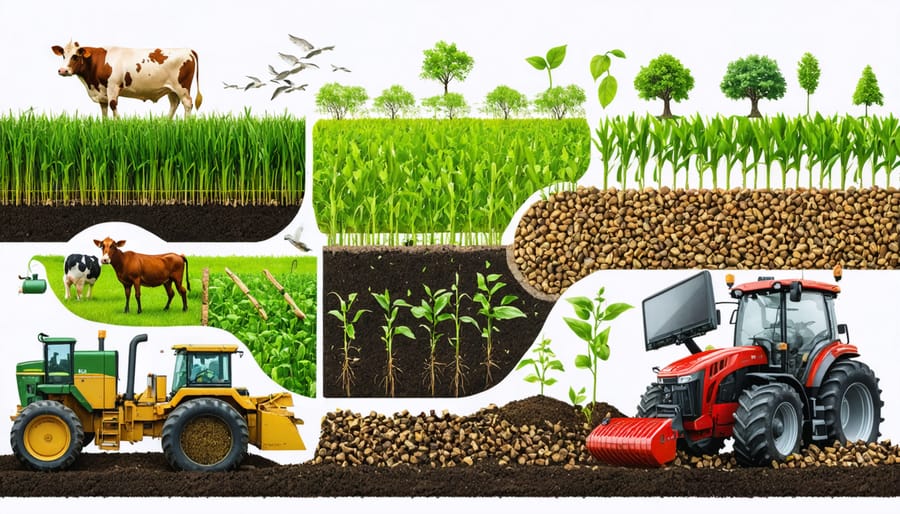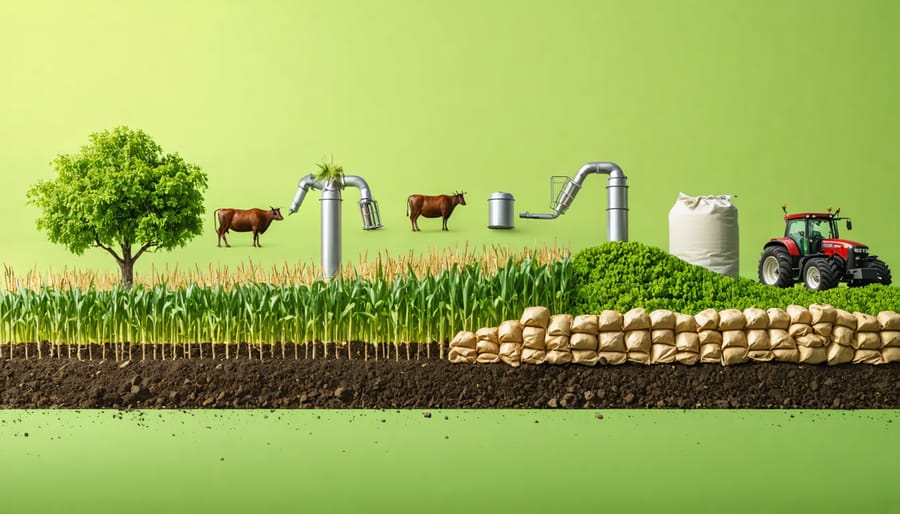Transform your farm into a carbon powerhouse by building healthy soil through carbon cycling. Alberta’s agricultural sector stands at the forefront of a revolutionary shift toward circular carbon economy practices, where every carbon molecule serves multiple purposes before returning to the soil. This regenerative approach not only cuts operational costs by 30-40% but also creates new revenue streams through carbon credits and improved crop yields. By capturing, reusing, and storing carbon within agricultural systems, Canadian farmers are pioneering a sustainable model that transforms traditional carbon waste into valuable resources. From converting crop residue into biofuel to implementing precision farming techniques that optimize carbon utilization, these practices are reshaping our understanding of agricultural sustainability. The circular carbon economy isn’t just an environmental solution—it’s a practical business strategy that’s already delivering measurable results across Alberta’s diverse farming landscape.
The Power of Carbon Cycling in Agriculture
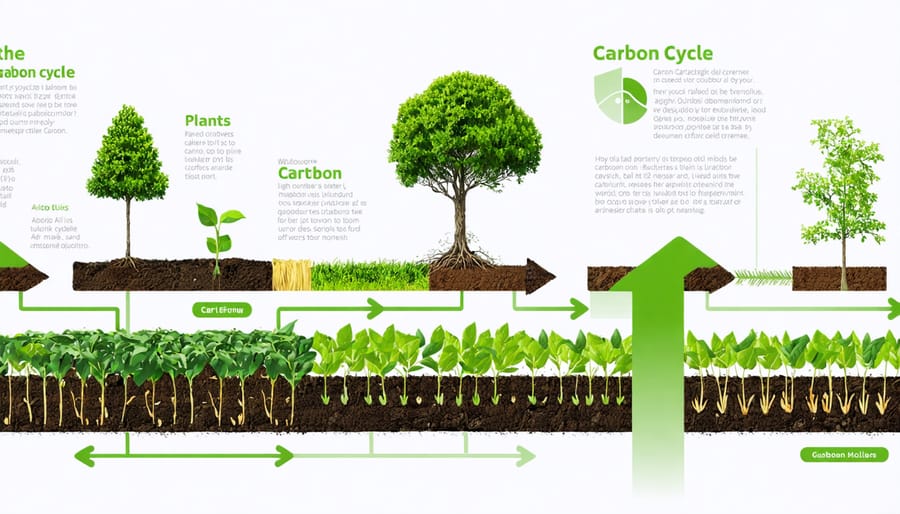
Carbon Flow on Your Farm
On a typical Alberta farm, carbon flows through multiple pathways, creating a natural cycle that can be enhanced for both environmental and economic benefits. Your crops pull carbon dioxide from the atmosphere during photosynthesis, storing it in their leaves, stems, and roots. When harvest comes, some of this carbon stays in the soil through crop residue, while some moves through your operation as grain or feed.
Think of your soil as a carbon bank account. Every time you implement practices like reduced tillage or cover cropping, you’re making a deposit. The rich black soils of central Alberta can store substantial amounts of carbon, often reaching 2-3% organic carbon content in well-managed fields. Through rotational grazing, your pastures can sequester up to 0.5 tonnes of carbon per hectare annually.
Your farming decisions influence this carbon flow. For instance, when you return manure to your fields or incorporate straw, you’re recycling carbon back into your system. Many Alberta farmers are finding that practices that boost carbon cycling also improve soil health and crop yields, creating a win-win situation for both their bottom line and the environment.
Measuring Your Farm’s Carbon Impact
Measuring your farm’s carbon footprint doesn’t have to be complicated. Start by conducting a basic inventory of your operation’s main carbon sources: fuel consumption, electricity usage, fertilizer application, and livestock emissions. Many Alberta farmers use the holos software, a free tool developed by Agriculture and Agri-Food Canada specifically for Canadian farming operations.
Keep detailed records of your inputs throughout the growing season. Track fuel receipts, fertilizer applications, and energy bills. For livestock operations, maintain accurate head counts and feed records. These numbers will form the foundation of your carbon assessment.
Consider working with local agricultural extension services or carbon accounting specialists who can help you establish a baseline. The Alberta Climate Information Service (ACIS) provides regional data that can help contextualize your farm’s measurements against local averages.
Remember to measure throughout the year, as seasonal variations can significantly impact your carbon footprint. Many successful Alberta farmers recommend taking quarterly measurements to identify patterns and opportunities for improvement. Start small with basic measurements and gradually expand your monitoring as you become more comfortable with the process.
Proven Carbon Management Strategies
Crop Rotation and Cover Crops
In Alberta’s unique climate, strategic crop rotation and cover crop selection play vital roles in building soil carbon and maintaining farm productivity. A typical three-year rotation incorporating canola, wheat, and pulses like field peas can increase soil organic matter while breaking pest and disease cycles. Many Alberta farmers have found success by adding a fourth year of cover crops, particularly cold-hardy varieties like fall rye or winter triticale.
Local success stories demonstrate the effectiveness of these practices. Near Red Deer, farmer Mike Anderson achieved a 2% increase in soil organic carbon over five years by implementing a diverse rotation system with cover crops. He uses hairy vetch and crimson clover as nitrogen-fixing cover crops during shoulder seasons, contributing approximately 45 kg of nitrogen per hectare to his soil.
For winter protection, cold-tolerant species like winter camelina and fall rye provide excellent soil coverage while capturing snow moisture – crucial for spring growing conditions in our prairie climate. These cover crops can be terminated in spring using roller crimpers, contributing valuable organic matter while reducing tillage requirements.
Timing is critical in Alberta’s short growing season. Farmers typically seed cover crops in early August after harvest or frost-seed in early spring. This approach ensures adequate biomass production before winter while maximizing the benefits of moisture conservation and soil building throughout the season.
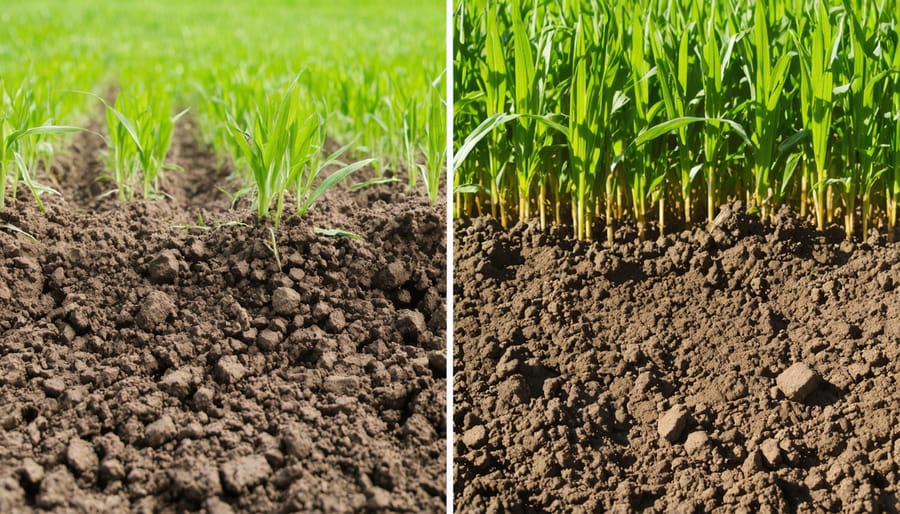
Organic Matter Management
Effective organic matter management practices are fundamental to building soil carbon and maintaining a healthy agricultural ecosystem. Here in Alberta, farmers are discovering innovative ways to enhance their soil’s organic matter content through several proven methods.
Cover cropping between main growing seasons helps protect soil while adding valuable organic material. Popular options like clover and rye grass work well in our climate, providing both soil protection and organic matter input. Crop residue management is another crucial practice – leaving stubble and straw in fields after harvest helps return carbon to the soil while protecting against erosion.
Composting farm waste creates a valuable soil amendment that improves both structure and fertility. Many Alberta farmers are now implementing on-farm composting systems, turning livestock manure and crop residues into rich, stable organic matter. Adding compost at rates of 10-15 tonnes per hectare has shown significant improvements in soil carbon levels across various soil types.
Reduced tillage practices help preserve existing soil organic matter while encouraging natural decomposition processes. When combined with diverse crop rotations, these approaches create an environment where organic matter can accumulate and persist. Local success stories show that farms implementing these practices have seen organic matter levels increase by 0.5-1% over five years, leading to better water retention and reduced input costs.
Waste-to-Resource Conversion
In Alberta’s agricultural landscape, transforming farm waste into valuable carbon resources represents a significant opportunity for both environmental stewardship and economic growth. Many farmers are discovering innovative ways of converting agricultural waste into revenue while contributing to carbon reduction goals.
Crop residues, such as straw and chaff, can be processed into biochar, a carbon-rich material that enhances soil fertility while sequestering carbon for hundreds of years. Local success stories include the Thompson family farm near Red Deer, which transformed their excess corn stalks into biochar, improving their soil structure while reducing disposal costs by 40%.
Animal manure and organic waste can be processed through anaerobic digestion systems, producing both renewable natural gas and nutrient-rich fertilizer. The Bergen Farms collaborative in central Alberta installed a community-scale digester that now powers 200 homes while providing participating farmers with additional income streams.
Innovative processing methods are also turning agricultural byproducts into high-value materials. Wood waste becomes engineered building materials, while crop residues are transformed into biodegradable packaging. These solutions not only reduce waste but create new market opportunities for farmers.
The key to successful waste-to-resource conversion lies in choosing appropriate technologies that match your farm’s scale and available resources. Local agricultural extension services offer guidance and support for farmers interested in implementing these systems.
Economic Benefits of Carbon Cycling
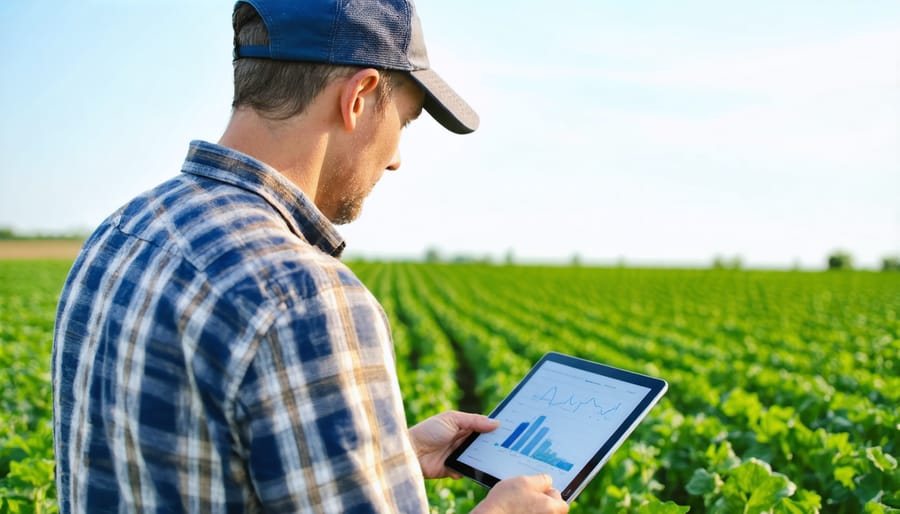
Carbon Credit Opportunities
Alberta farmers have several promising opportunities to participate in carbon credit programs, offering additional revenue streams while contributing to climate change mitigation. Through the Alberta Carbon Offset System, farmers can earn credits for implementing practices that reduce greenhouse gas emissions or enhance carbon sequestration.
Key eligible activities include conservation tillage, continuous cropping, and precision nitrogen management. For example, farmers who adopt zero-till practices can earn approximately $1.50 to $3.00 per acre annually in carbon credits, depending on market conditions and verification protocols.
The Canada Grassland Protocol, launched in 2021, provides another avenue for carbon credits by rewarding farmers who maintain permanent grasslands rather than converting them to cropland. This program typically offers credits valued between $15 and $30 per hectare annually.
To participate, farmers need to:
– Register with an approved carbon offset aggregator
– Document baseline operations and planned improvements
– Implement approved protocols
– Maintain detailed records
– Complete third-party verification
Local agricultural extension offices provide free support in navigating these programs, and several farmer-led organizations offer peer mentoring. The Alberta Carbon Registries website maintains up-to-date information on current protocols and market prices, making it easier for farmers to assess potential returns before committing to a program.
Remember that carbon credit revenue should be viewed as a supplement to, not a replacement for, traditional farm income streams.
Cost Savings Through Carbon Management
Alberta farmers are discovering significant cost savings through effective carbon management practices. Take the case of Sarah Thompson, a grain farmer near Red Deer, who reduced her fertilizer costs by 15% through precision agriculture and soil carbon optimization. By implementing cover crops and minimizing tillage, she improved soil organic matter by 2% over three years, resulting in better water retention and reduced irrigation needs.
In the Peace River region, the Miller family farm saved approximately $45 per hectare on input costs by adopting regenerative grazing practices. Their rotational grazing system not only improved soil health but also increased forage production by 30%, reducing the need for purchased feed supplements.
Real numbers from the Lethbridge Research Centre show that farms implementing carbon-smart practices are seeing 10-20% improvements in yield stability during drought years. This translates to an average saving of $75-100 per hectare in drought insurance premiums and reduced risk of crop failure.
These benefits extend beyond direct cost savings. Many Alberta farmers report reduced equipment wear and fuel consumption, with some saving up to 40% on fuel costs through reduced tillage practices. Additionally, participating in carbon offset programs has provided new revenue streams, with some farmers earning $15-30 per hectare annually through carbon credits.
These examples demonstrate that smart carbon management isn’t just environmentally sound – it’s economically savvy for Canadian farmers.
Alberta Success Stories
Meet Sarah Johnson, a third-generation farmer from Lethbridge County, who transformed her 800-hectare operation through innovative circular farming practices. By implementing a comprehensive crop rotation system and utilizing cover crops, Sarah reduced her synthetic fertilizer use by 40% while increasing soil organic matter by 2% over five years.
The Davidson family farm near Red Deer showcases another inspiring success story. Brothers Mike and Tom Davidson integrated livestock with their grain operation, using cattle to graze cover crops and crop residues. This integration reduced feed costs by $75 per head annually while improving soil health and increasing carbon sequestration by an estimated 2.5 tonnes per hectare yearly.
In the Peace River region, Robert Martinez’s innovative approach to waste management has become a model for other farmers. By partnering with local food processors, he sources organic waste materials for composting, creating a closed-loop system that generates premium soil amendments. This initiative not only reduced his input costs by 30% but also created an additional revenue stream through compost sales to nearby market gardeners.
Perhaps most notable is the Cooperative Carbon Project in Mountain View County, where twelve farmers collaborated to implement a regional carbon cycling program. Through shared resources and knowledge, participating farms have collectively reduced greenhouse gas emissions by 15% while improving soil productivity. The project’s success has attracted attention from agricultural communities across Western Canada, leading to similar initiatives in neighbouring regions.
These success stories demonstrate that circular carbon practices aren’t just environmentally sound – they’re economically viable solutions that strengthen farm operations and rural communities. Each case represents a unique approach to implementing circular principles, proving that there’s no one-size-fits-all solution, but rather multiple pathways to success in Alberta’s agricultural landscape.
The journey toward a circular carbon economy in agriculture is both achievable and rewarding for Canadian farmers. By implementing the practices we’ve discussed, you can play a vital role in reducing emissions while potentially increasing your farm’s productivity and profitability. Starting small with soil carbon management or incorporating cover crops can lead to significant positive changes over time.
Remember that you’re not alone in this transition. Alberta’s agricultural community offers numerous resources, including local extension services, peer networks, and funding programs to support your circular carbon initiatives. Consider connecting with neighbouring farmers who have already implemented these practices to learn from their experiences and share insights.
Your next steps might include conducting a baseline carbon assessment of your operation, identifying areas where circular practices could have the most impact, and developing a phased implementation plan that aligns with your farm’s capabilities and goals. Start by focusing on one or two practices that make the most sense for your operation, whether that’s minimizing tillage, improving grazing management, or incorporating biochar.
The shift to circular carbon practices is an investment in your farm’s future and our agricultural community’s sustainability. As more farmers embrace these methods, we’re building a stronger, more resilient agricultural sector that benefits both our economy and environment. Take advantage of available resources, stay connected with your farming community, and remember that every step toward circularity counts.

